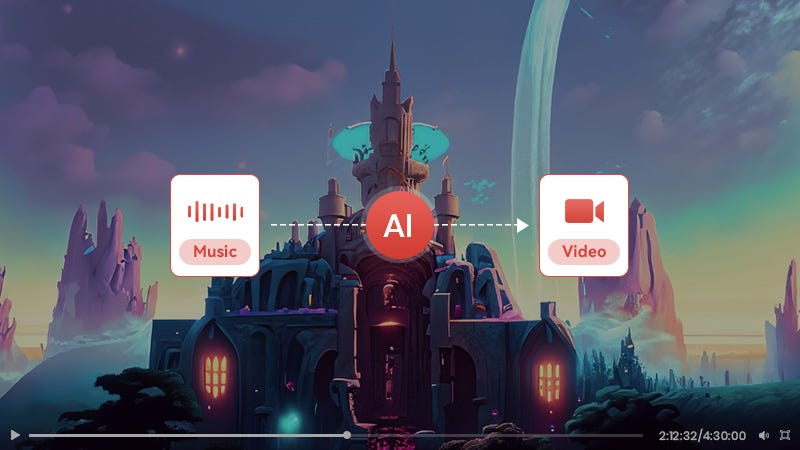RTM vs RPM Codes: Choosing the Right Strategy

In the context of RTM vs RPM, remote patient monitoring (RPM) and remote therapeutic monitoring (RTM) have distinct differences. RPM primarily concentrates on monitoring physiological data such as vital signs and medical parameters. It allows qualified healthcare professionals to monitor patients’ health remotely, even outside traditional healthcare settings. On the other hand, RTM focuses on non-physiological monitoring, including therapy adherence and response, using digital care tools.
Remote Patient Monitoring (RPM) is a specific type of telehealth at homecare where patients utilize mobile medical devices and technology to collect their health data, known as patient-generated health data (PGHD). This data is then transmitted to healthcare professionals for monitoring and analysis.
RTM vs RPM: Difference
Remote Patient Monitoring (RPM) refers to the use of technology and mobile medical devices to remotely monitor patients’ physiological data outside of conventional healthcare settings. RPM primarily focuses on monitoring vital signs, biometric data, and other physiological parameters such as heart rate, blood pressure, glucose levels, and oxygen saturation. It enables qualified healthcare professionals to track and analyze patients’ health remotely, allowing for early detection of abnormalities and timely intervention. RPM is typically used by physicians, nurses, and other healthcare providers to monitor and manage chronic conditions or post-acute care.

Remote Patient Monitoring (RPM), also known as Remote Physiological Monitoring, focuses on monitoring a patient’s physiological parameters like weight, blood pressure, pulse oximetry, or respiratory flow rate outside of traditional healthcare settings using advanced remote monitoring devices. It is primarily used to track patients with chronic conditions like hypertension, diabetes, COPD, and heart disease. RPM codes are limited to physicians and certain qualified non-physician practitioners (NPPs), aiming to detect health issues early and promote patient engagement in their healthcare.
RTM vs RPM Billing: Key Differences in Revenue Generation Strategies

When it comes to revenue generation strategies, RTM vs RPM play distinct roles. While both approaches aim to maximize revenue, they employ different tactics and methodologies. Understanding the differences between RPM and RTM billing is essential for businesses to effectively implement these strategies and optimize their revenue streams. Let’s delve into the contrasting features of RPM and RTM billing to gain insights into their revenue generation capabilities.
According to CMS, how may RTM services be billed?
According to the Centers for Medicare and Medicaid Services (CMS), Remote Therapeutic Monitoring (RTM) services may be billed using the following guidelines:
RTM vs RPM Codes

Billing for RPM Codes
Remote Patient Monitoring (RPM) involves the collection of patient data through connected devices, such as wearables or sensors, to monitor their health remotely. To bill for RPM services, healthcare providers can use the appropriate Current Procedural Terminology (CPT) codes, such as 99453, 99454, and 99457, which cover the initial setup, device supply, and data management. Providers should ensure compliance with the specific guidelines and requirements set by Medicare and other payers to receive reimbursement for RPM services.
In 2024, the following are the CPT codes, descriptions, payment rates, and billing frequency for Remote Therapeutic Monitoring (RTM):
- CPT 99453: This code covers device setup and patient education on vital sign monitoring equipment. It is a one-time code billed after the initial 16 days of monitoring. The average national payment rate is $19.65.
- CPT 99454: This code is used for supplying the device for daily recording or programmed alert transmissions. It can be billed every 30 days if the patient uses the device for at least 16 days per month. The average national payment rate is $46.83.
- CPT 99457: This code covers the initial 20 minutes of treatment management, including interactive remote communication with the patient. Communication methods can include video, phone, email, or text messaging. The average national payment rate is $48.
- CPT 99458: This code encompasses each additional 20 minutes of RPM services, up to a maximum of 60 minutes in a calendar month. Documentation of the time distribution is required. The average national payment rate is $48.14.
- CPT 99091: This code requires a minimum of 30 minutes in a calendar month for clinical staff to gather, interpret, and process patient-transmitted data. It also includes at least one communication (phone or email) involving medical management or monitor advising. The average national payment rate is $52.71.
RTM billing codes: RTM vs RPM
Real-Time Marketing (RTM) differs from RPM in that it focuses on timely marketing campaigns and promotional activities. As such, billing for RTM involves standard marketing practices and does not require specific medical billing codes. Instead, traditional marketing and advertising methods are employed, and billing is typically based on the services provided by marketing agencies or professionals.
Here are the correct 2024 RTM CPT codes, descriptions, payment rates, and billing frequency:
- CPT 98975: This code covers the initial setup and patient education on the use of equipment. It can be billed once by a qualified healthcare professional when at least 16 days of data have been collected on at least one medical device. The average national payment rate for CPT 98975 is $19.38.
- CPT 98976: This code is used for billing respiratory devices supplied with daily scheduled recordings, programmed alerts, and transmissions for monitoring the respiratory system. It can be billed every 30 days by a qualified healthcare professional when at least 16 days of data have been collected on at least one medical device. The average national payment rate for CPT 98976 is $55.72.
- CPT 98977: This code reimburses musculoskeletal devices supplied with daily scheduled recordings, programmed alerts, and transmissions for monitoring the musculoskeletal system. It can be billed once by a qualified healthcare professional when at least 16 days of data have been collected on at least one medical device. The average national payment rate for CPT 98977 is $55.72.
- CPT 98980: This code bills for the initial 20 minutes of treatment time per calendar month. It requires at least one interactive communication via phone or video with the patient during the month. It can be billed “incidentally” or under general supervision by qualified healthcare professionals such as physicians, nurse practitioners (NPs), and physician assistants (PAs). The average national payment rate for CPT 98980 is $50.18.
- CPT 98981: This code covers each additional 20 minutes of treatment time per calendar month, with the same requirements as CPT 98980. The average national payment rate for CPT 98981 is $40.84.
In the context of RTM vs RPM, these RTM codes are specific to qualified healthcare practitioners such as physical therapists (PTs), occupational therapists (OTs), and speech-language pathologists (SLPs). The billing practitioner must personally furnish the RTM services, and when the practitioner is a PT or OT, supervision of a therapy assistant is required. These codes allow qualified healthcare professionals to bill for their services and receive payment for remote therapeutic monitoring in 2024.
Differences in CMS Codes: RTM vs RPM
Remote Therapeutic Monitoring (RTM) codes are specifically designed for digital care tools that capture non-physiological metrics to improve patient outcomes. These codes cover a wide range of non-physiological data collected by medical devices or software that meets the definition of a medical device. Examples of emphasized non-physiological data include pain levels and medication adherence.
Compared to Remote Patient Monitoring (RPM) codes, RTM codes have broader applications and can be used for various health conditions, including musculoskeletal system status, respiratory system status, therapy adherence, and therapy response. RTM data can be self-reported, manually entered into a device, or digitally uploaded by patients themselves.
While RPM codes are typically billed by physicians or qualified healthcare providers, RTM codes fall under general medicine codes. Physical therapists, clinical psychologists, speech-language pathologists, and occupational therapists are expected to be the primary users of RTM codes. However, it’s worth noting that the CMS examples provided limit the scope of RTM to the musculoskeletal and respiratory systems.
The Functional Differences: RTM vs RPM
Remote Patient Monitoring (RPM) involves remotely monitoring patients by transmitting data from their healthcare devices to the clinician. It focuses on general monitoring and data collection.
Remote Therapeutic Monitoring (RTM) allows clinicians to remotely monitor patients and provides clinical and therapeutic interventions specific to the musculoskeletal and respiratory systems. It focuses on therapy adherence and response.
The main difference is that RPM is primarily for monitoring, while RTM includes therapeutic interventions. Healthcare providers must determine which approach is best for their patients.
Key Similarities and Differences Between RTM vs RPM
One of the significant changes introduced with RTM codes is the expanded eligibility for billing CMS. While RPM was limited to physicians and certain non-physician practitioners, RTM codes now include physical and occupational therapists, speech-language pathologists, physician assistants, nurse practitioners, clinical social workers, and physiatrists. This expansion allows these professionals to monitor and modify therapy programs based on objective data captured remotely.
Another distinction is that RTM allows patients to self-report data, while RPM requires automatic transmission of data through approved monitoring devices.
RTM vs RPM reimbursement criteria
The reimbursement criteria for Remote Therapeutic Monitoring (RTM) and Remote Patient Monitoring (RPM) are similar, with one key difference. RTM allows for self-reported data and digitally uploaded non-physiological and therapeutic information, while RPM requires automatic transmission of physiological data.
Apart from this distinction, the billing structure for RTM is comparable to RPM. RTM providers are eligible for reimbursement for activities such as patient education on remote care-management platforms, monitoring platform alerts, direct messaging between patients and providers, and data collection for feedback on pain levels, activity, and motion.
What is remote therapeutic monitoring method?
Remote Therapeutic Monitoring (RTM) is a method of remotely monitoring patients’ non-physiological health data using digital care tools. It involves collecting and analyzing information related to therapy adherence, therapy response, and other non-physiological metrics to improve patient outcomes. RTM allows for targeted interventions and personalized care.
See Also:
- What Is CPH Professional Liability and Malpractice Insurance?
- RTM vs RPM Codes: Choosing the Right Strategy
- 5 Best Tennis Elbow Medical Devices: Tennis Elbow Splint
- Innovation in Physical Therapy Future & Trends
- What is Remote Therapeutic Monitoring Codes: RTM
- What are the Top Healthcare Analytics Companies





